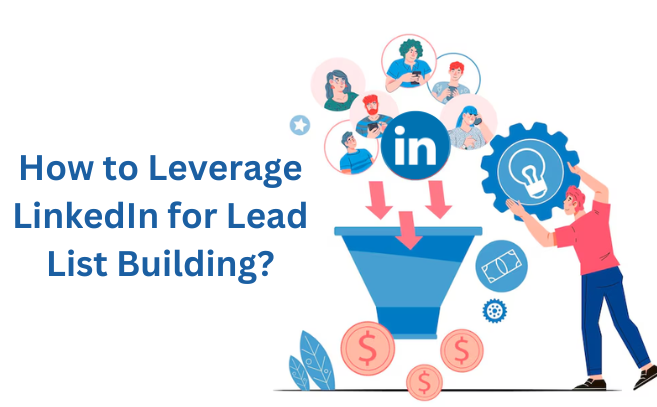Introduction
Effective lead generation remains fundamental to successful B2B sales strategies. However, identifying qualified leads continues to pose a significant challenge for many businesses. This is because a significant portion of leads generated through marketing automation fail to convert into sales. Moreover, traditional methods like cold calling yield low conversion rates, as most people ignore cold calls. However, there’s another way to find more leads and ensure maximum conversion – by using platforms like LinkedIn to gather accurate lead data.
LinkedIn, the world’s largest professional network, offers a variety of features and tools to help you circumvent these challenges. These tools allow you to identify, connect with, and strategically target decision-makers and potential customers within your industry. This blog post will equip you with actionable strategies to leverage LinkedIn’s functionalities for efficient B2B list building.
What does an effective lead list look like?
A functional lead list focuses on actionable information about potential customers. Here’s a breakdown of the key components.
- Contact Information: First and last name, business email address, and ideally, a business phone number (depending on your outreach strategy).
- Company Details: Company name, website, industry, and size (number of employees or annual revenue).
- Additional Qualifying Information: Depending on your product or service, other relevant details may include years of experience, specific skills, or purchase history (if available ethically).
- Decision-Maker Information: Specific titles and roles of the key decision-makers within the target company.
- Source: How did you obtain the lead information (e.g., LinkedIn search, downloaded content form, industry event)?
Below is an example of a comprehensive B2B lead list containing business name, business category, contact name, progress, status, address, country, and city.
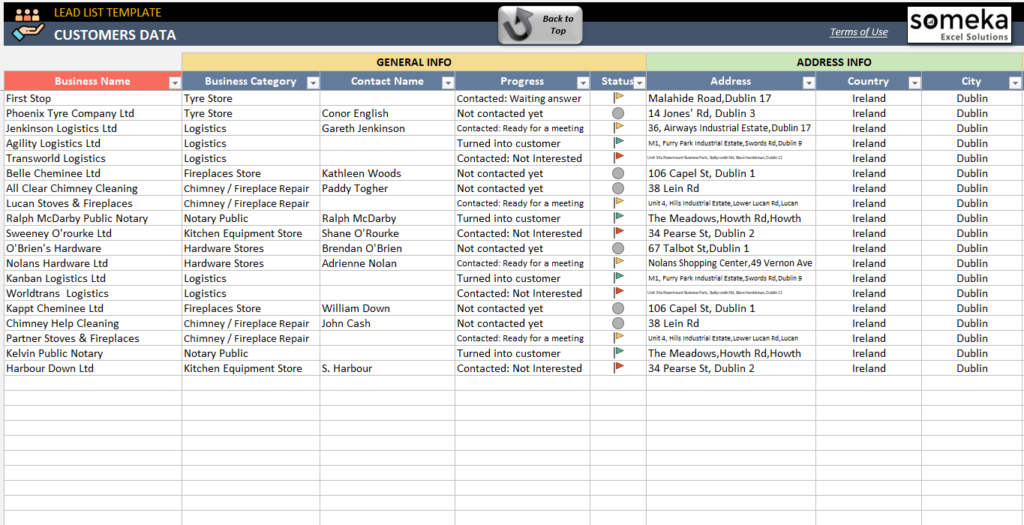
How do you use LinkedIn to build a lead list?
Before you start using LinkedIn for lead searching, outline the characteristics of your ideal customer and create profiles. These profiles (ICPs) include information about their industry, company size, job title, decision-making level, and other relevant details. This gives you an edge in tailoring your outreach messages and ensuring that your communication is relevant to the recipient.
Once you know your target customers, start leveraging the features and tools mentioned below.
Using paid features like Sales Navigator
A free LinkedIn account offers basic search and filters for B2B lead generation. However, for more advanced targeting, consider a Sales Navigator subscription.
Sales Navigator is a premium feature that assists businesses in identifying target audiences and engaging with potential customers. It offers several features that you can utilize for lead-building purposes, including
Advanced searching tools
- Boolean search: You can conduct a Boolean search within Sales Navigator to refine your lead search using connectors like AND, OR, NOT, and other punctuation to narrow down your results effectively.
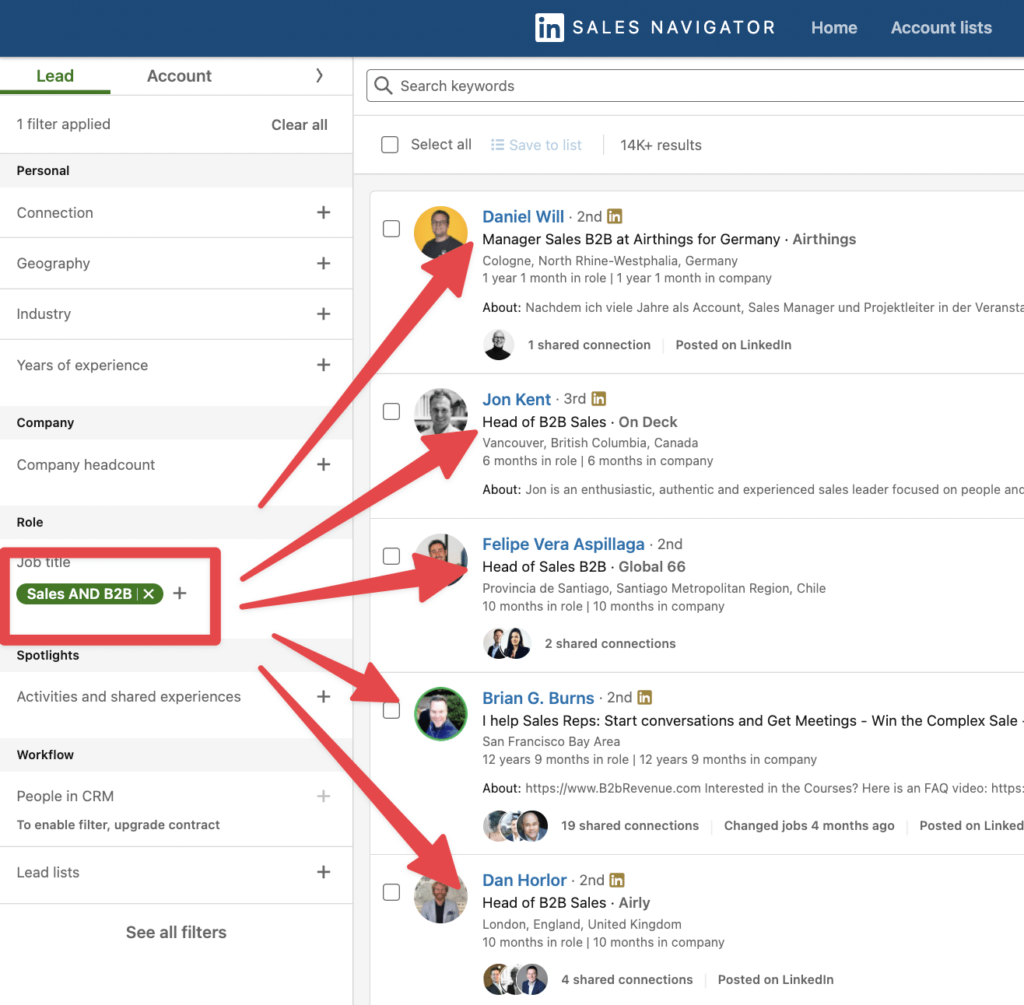
- Company filters: You can refine your search by targeting specific industries, company sizes, locations, or growth stages.
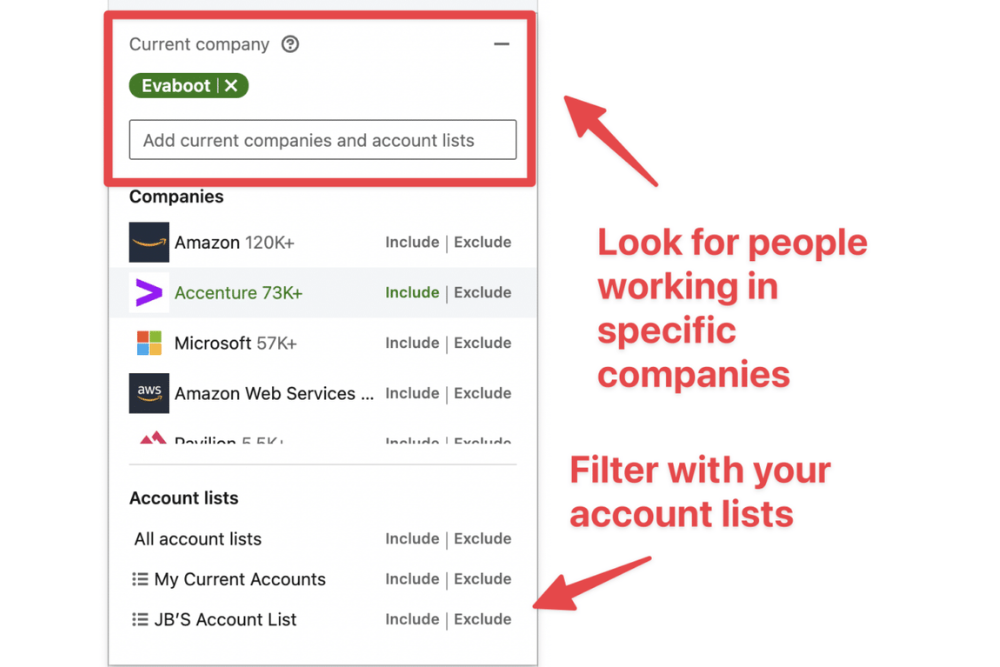
- Spotlight filters: Sales Navigator highlights various user actions and data points you can leverage for filtering. This includes users who recently changed jobs, got promoted, or shared content relevant to your industry.
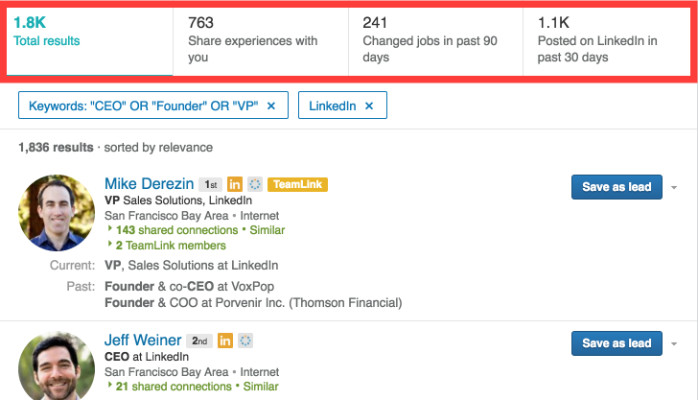
- Personal filters: Search for B2B leads based on specific demographics like seniority level or years of experience. You can even search for users based on their group affiliations within LinkedIn.
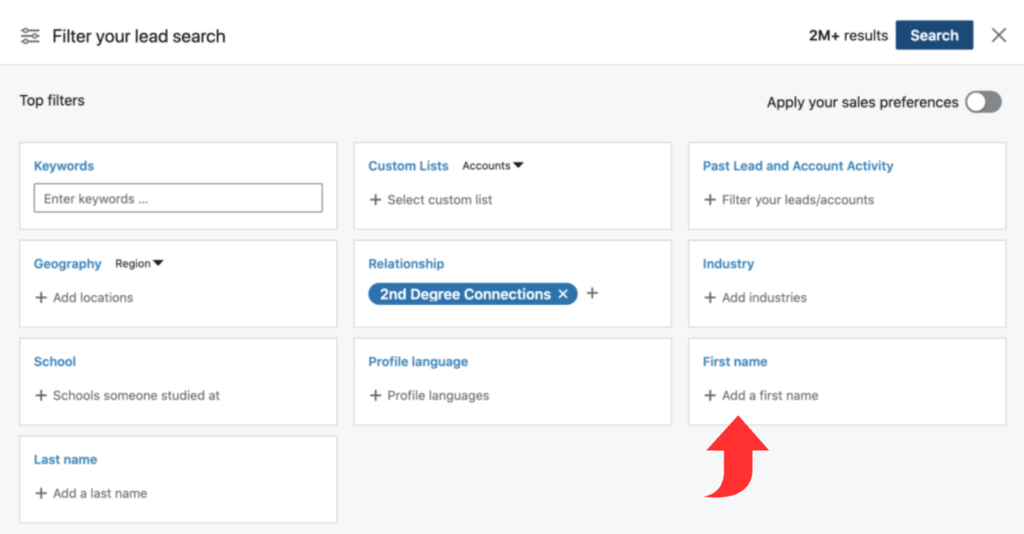
Add prospects to your lead lists by using the “Save to Lists” option
The “Save to list” functionality within Sales Navigator allows you to save targeted profiles and build custom lists, optimizing your B2B lead list-building process. This creates a centralized repository within your Sales Navigator dashboard, providing a single point of access to manage your entire lead list.
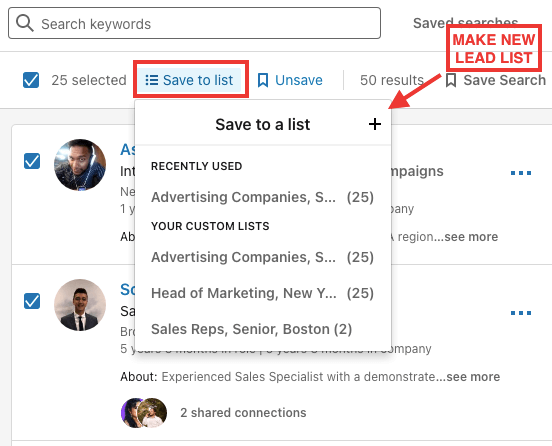
Automated updates on saved leads
Sales Navigator offers updates on leads within your saved lists. This includes changes in their job title, company information, or new content they share on LinkedIn, ensuring a continuous flow of information.
Read: Optimizing Salesforce CRM Performance_ Customization and Consulting Strategies
Using LinkedIn Lead Gen forms
LinkedIn Lead Gen Forms are pop-up questionnaires attached to your LinkedIn ads. They automatically fill in a user’s LinkedIn info such as their contact info, company name, job title, and location. This pre-filled information makes it easier for them to complete your form and provide you with more professional details while receiving the assets they’re interested in.
Consider the image below for an example. All fields related to basic professional information have been filled out automatically.
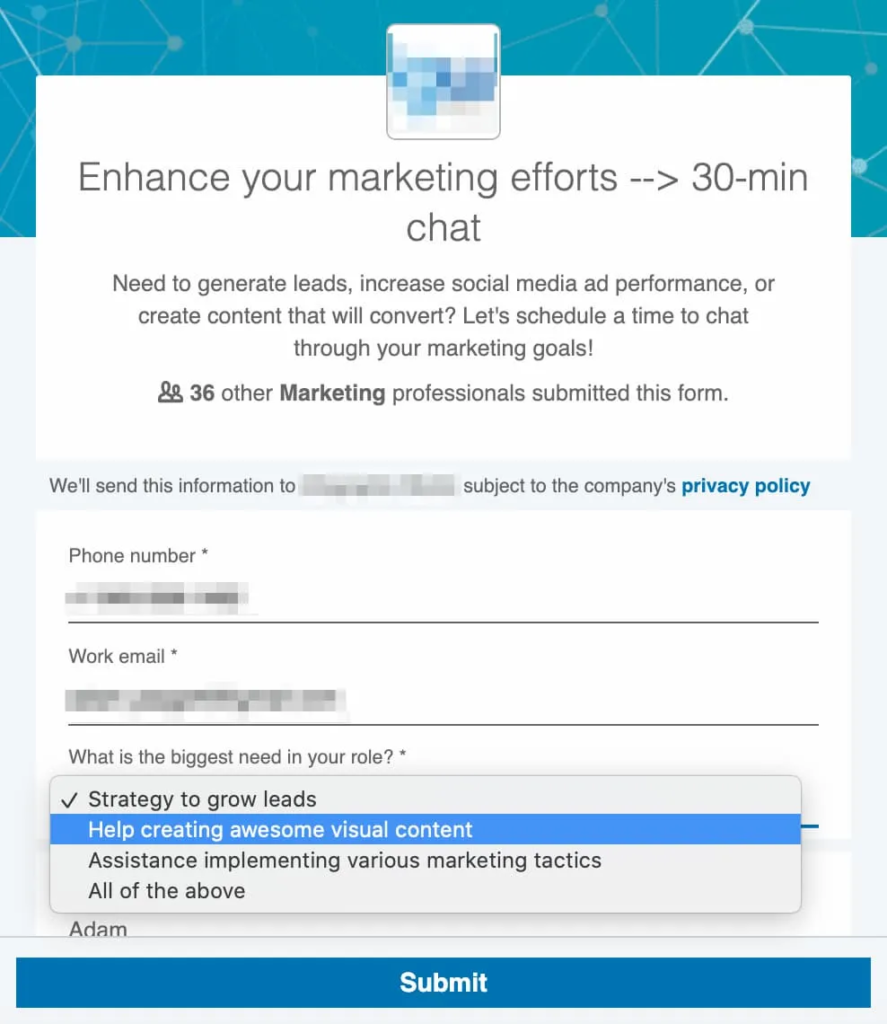
Source: GetResponse
How do they help you build quality lead lists?
- Since Lead Gen Forms are part of targeted ad campaigns, only those fitting your ideal customer profile (ICP) will see the ads. This results in a relevant and high-converting lead list.
- Pre-filled data ensures the information you collect is accurate and up-to-date. This eliminates errors and wasted time spent verifying contact details.
- LinkedIn Lead Gen Forms integrate with marketing automation platforms like HubSpot and Mailchimp. This allows hidden fields, like agency ID or product ID, to be captured without user input. These hidden fields help you:
- Identify lead source: Agency ID reveals which team or agency generated the lead.
- Segment leads by product: Product ID lets you tailor your lead list based on the specific product shown in the ad.
Leveraging 2nd and 3rd degree connections
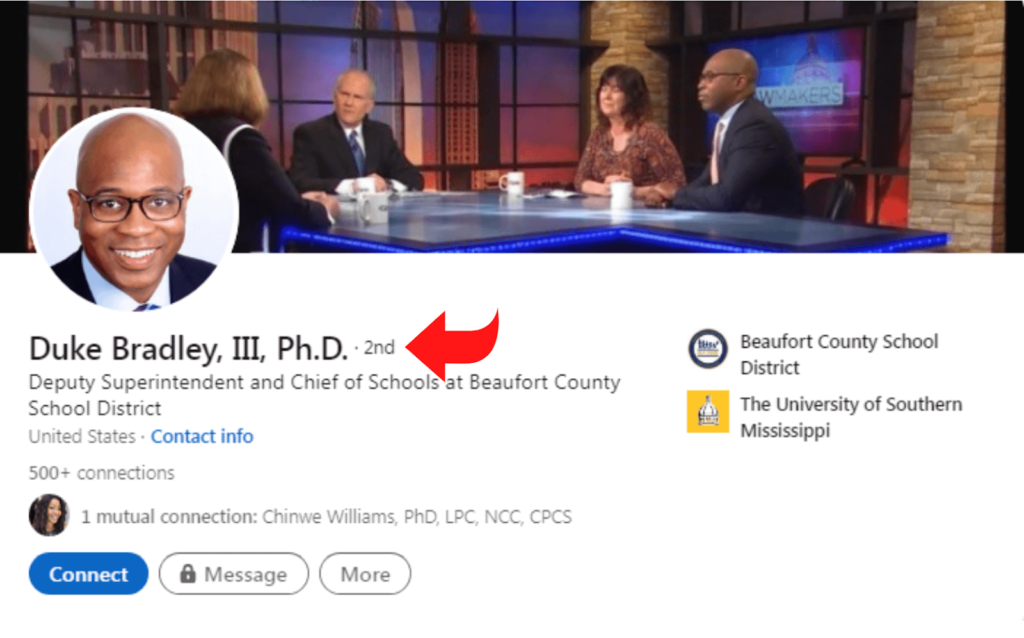
2nd-degree connections are people connected with your 1st-degree connections (but not directly to you). You will see a “2nd” icon next to their names. Similarly, 3rd-degree connections are a step further – they’re in touch with your 2nd-degree connections (and show a “3rd” icon).
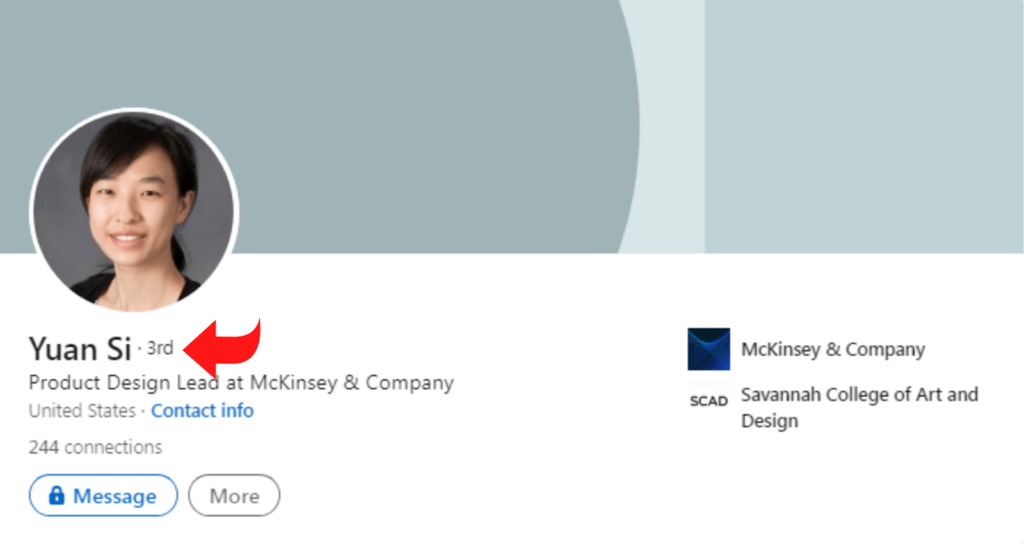
How to use 2nd and 3rd-degree connections for B2B list building?
- Utilize the search bar and filter by “Connection” to find people connected to your existing network. Combine “Connection of” with other relevant filters like industry, job title, or company size. This refines your search to target 2nd-degree connections who best fit your ideal customer profile.
- To leverage 3rd-degree connections, use advanced search filters with your 2nd-degree connections as a starting point.
- LinkedIn’s “People You May Know” section suggests profiles based on your existing network and activity. This often contains 3rd-connections. Review these profiles to see if they align with your ICP.
Integrate LinkedIn data with contact databases for B2B lead generation
Another way to explode your lead list with LinkedIn is to club its data with that from other B2B contact databases such as Salesforce, ZoomInfo, and Clearbit. B2B contact databases often contain basic information like name, company, and email address. Integrating LinkedIn data allows you to enrich these profiles with additional details like seniority levels, and even skills. This yields more comprehensive lead lists.
Conclusion
LinkedIn’s extensive network, with over 1 billion users, serves as a prime B2B lead generation platform for many businesses. However, the efficacy of lead generation hinges on how you utilize advanced search features such as Sales Navigator and 2nd/3rd-degree connections for list building. Opting for professional B2B list building services is often a better option if you want to maximize the potential and ensure accuracy in lead data. These service providers are experts in handling CRM data, discovering more LinkedIn contacts, and compiling them to generate a comprehensive B2B lead list.
